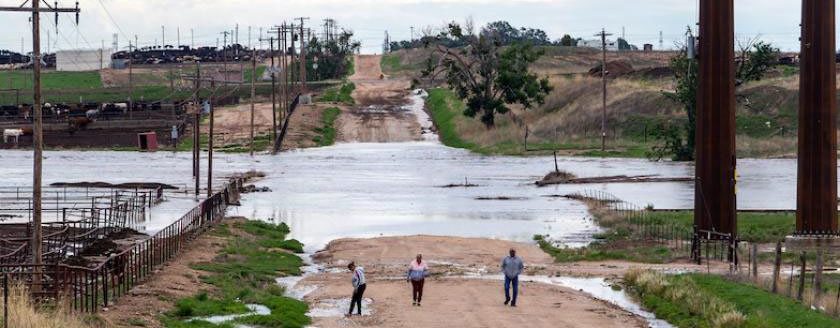They say when it rains, it pours, and that saying could not be truer than in the Texas Panhandle the last month. Over Memorial Day weekend, Hereford, Texas, one of the largest cattle feeding areas in the United States, received the brunt of a rain event, leading to historic rainfall totals and flood conditions.
Between 8 to 11 inches of rain accumulated in the Texas Panhandle town, much of it in a short period of time, causing the water to rise. The flash flood event left residents with little time to prepare and since the geographic area is extremely flat, the water had no natural exit. Since the Panhandle only averages 15 to 25 inches annually, flooding is not a scenario the area experiences very often. The rising water caused evacuations of homes—destroying at least four residences—and causing devastating impacts to the agricultural industry. Crops were underwater and livestock owners, dairies and feedlots are reporting many animal deaths.
The exact number is unknown at the moment, but with the large concentration of feedlots, the death loss is expected to be high. Fortunately, the water receded from the area around Hereford. Feedlots are working to pump water out of pens, clean up the aftereffects of the floodwaters and move cattle to dry pens. Residents of the Panhandle are staying alert the next few weeks as rainy weather patterns are predicted, putting them in danger of more flooding.
“We continue to be very thankful for the outpouring of support and assistance from friends, family, neighbors, communities, and [Texas Cattle Feeders Association] members during this unprecedented natural disaster resulting from a 500-year storm event in Deaf Smith and Castro counties,” said Ben Weinheimer, president and CEO of Texas Cattle Feeders Association. “Our recovery efforts have focused on caring for and feeding cattle that were unaffected by the storm; prioritizing the safety of our employees, workers and volunteers; repairing infrastructure such as roads and drainage ditches; pumping flood waters to other storage ponds that still have excess capacity; and managing the most unfortunate part of the disaster—properly removing and disposing of cattle that were lost. We’ve been in close coordination with the Texas Commission on Environmental Quality and Texas Animal Health Commission throughout the response and recovery. Based on the latest weather forecast, we anticipate that current response and recovery activities will be completed in the next few days.”
Lacey Vilhauer can be reached at 620-227-1871 or [email protected].




